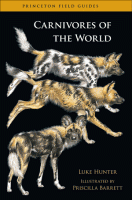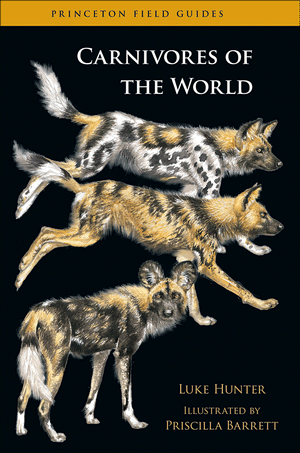 Author: Luke Hunter
Author: Luke Hunter
Illustrated by: Priscilla Barrett
Publisher: Princeton University Press
Book Review by: Paiso Jamakar
Many of us learned in our high school biology courses that living things belong to either the animal or the plant kingdom. You may also recall classification of these kingdoms into phylum, class and order, and further breakdown into family, genus and species.
Well, carnivores belong to the order Carnivora and there are 245 terrestrial species of them, belonging to 13 specific families: bears; cats; civets, along with genets and oyans; the African palm civet; dogs; fosa and allies; hyenas; linsangs; mongooses; raccoons; red panda; skunks and stink badgers; and weasels, martens, badgers and otters.
The species of animals in the order Carnivora range in size all the way from the tiny Least Weasel that can squeeze through a wedding ring, to the very large Polar Bear which grows as tall as 10 feet and weighs over 1500 pounds.
Luke Hunter is uniquely qualified to produce this 240-page book. It is aptly described as a “field guide” on this order of animals that consume meat. A lot of hard work in compiling the list of carnivorous animals and their characteristics has gone into this book.
Hunter is president of Panthera, an organization that helps conserve wild cats. He has previously written two related books: Cheetah and Cats of Africa: Behavior, Ecology and Conservation.
Going through this wonderful book is a rewarding discovery process, which is enhanced even more with looking at 86 detailed, true-to-life, and full-color sketches of the animals drawn by acclaimed wildlife artist Priscilla Barrett. She has also supplied more than 400 line drawings of skulls and footprints to enrich your learning experience with this book.
This book is very well organized. It is basically a reference work, but you can also read it from beginning to end if you want to learn more about this order of animals or if you are a biology student specializing in this the study of carnivores.
The first level of organization in this book is families. The book specifies suborders if there are any, as well as the number of species in that suborder. The size range of the animals is specified. For example in the family Felidae (cats) the weight range of the members of this family is given, with black cat weighing between one and 2.5 kilograms (about five and a half pounds) and the tiger weighing as much as 325 kilograms (about 715 pounds).
A complete description of the family is then provided below these basic facts. For example, for the family of cats, 37 species have been identified by biologists. The lion is also a cat, as most people know, and it is the only member of this family that lives in large and complex social groups, although male cheetahs live in small and enduring groups.
This is truly an authoritative, well-researched and richly-illustrated book on the world’s carnivores, and we commend the author Luke Hunter and the illustrator Priscilla Barrett for their work in compiling the material and presenting it so well in this outstanding book.







